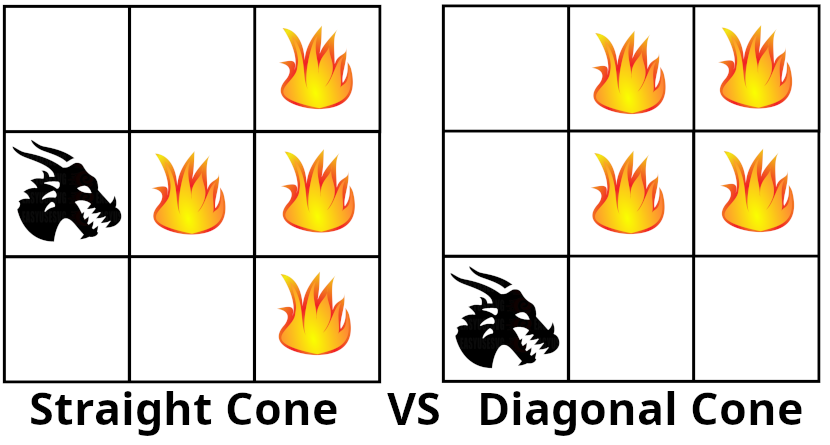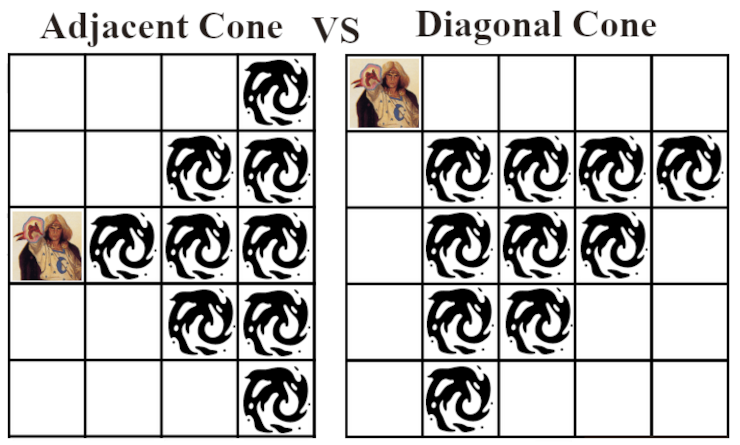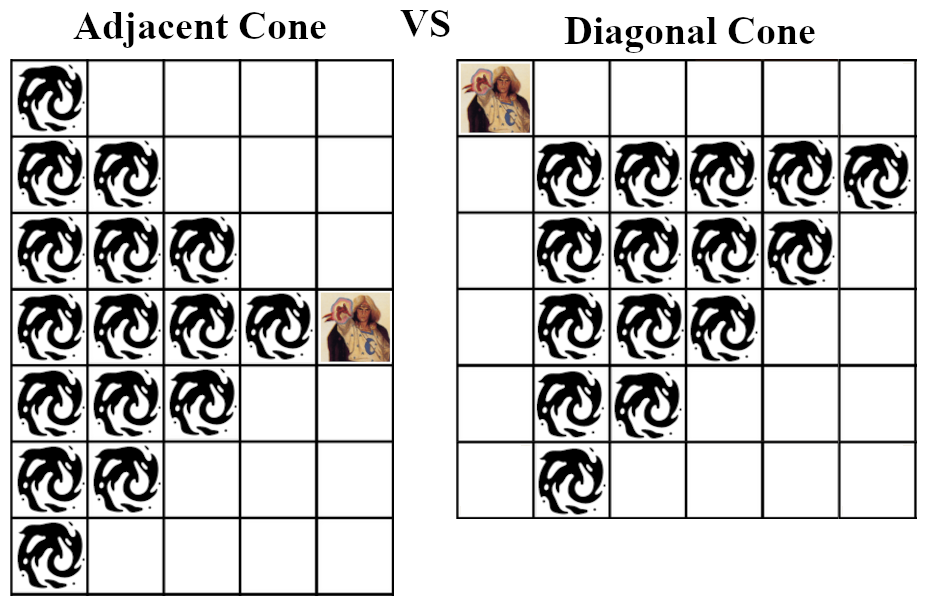
 Leveling the Heroes
Leveling the Heroes
The system I used in my game was very simple:
the character sheets had 14 quest slots, so I allowed the players to level up their characters every 14 games.
Basically, the level up process allowed you to up one stat by one point:
+1 Mind Point increase gave you 4 extra mana points.
+1 Body Point--well, that's obvious.
+1 Feat of Strength gave you +1 Combat Die to attack.
+1 Feat of Dexterity gave you +1 Combat Die in defense
There are two characters that have special leveling rules, the Druid and the Spectral Chaos Warlock. For the Druid, instead of leveling their character up they may opt to get a more powerful familiar, or more familiars. Those rules can be found here. The rules for the Spectral Chaos Warlock can be found in the footnote at the bottom of the page.

 Fate Points
Fate Points
This section written with help from Karnov & Dewayne Agin.
Concerning Fate Points:
A Fate Point is something awarded to a character for especially good roleplaying. Fate
Points are given sparingly, and should be used sparingly. They are used as a
last resort, and considered a 'stroke of luck' saving throw.
Consider this scenario: The Barbarian is ranging a little ahead of the other
players. He opens a door, and steps in. Hidden behind furniture were three
Orcs, who jump out and attack. The Barbarian thinks 'No problem; I can hold
these greenskins off until the rest of the party arrives next turn. I'm
wearing plate mail, have a shield and a helmet. I will be OK". The Orcs
attack, and roll 8 skulls (or 7, or 6 - however many body points the Barbarian
has). The Barbarian rolls his defend dice - not a single shield. The Hero is
out of Healing Potions and his companions are too far away to help. He is
about to die because of some freakish dice rolls. He happens to have some
Fate Points left, and uses them to save himself.
Fate Points can be used in two different ways:
A). Fate Points can be used to re-roll dice on a one to one basis. One point is one die. A player can only use Fate Points on their own dice and on Zargon's dice. They cannot use their points on other Heroes' rolls. (The exception is the Chronomancer.) You are allowed to reroll a die multiple times, provided you can pay the Fate Point cost.
B). If the Hero has at least 5 Fate Points, they may burn them all at once to completely reset an entire round. Everything that has happened during that round: manna spent, ammunition spent, Body Point damage taken, Body Point damage dished out, spaces moved, doors opened... EVERYTHING is rewound and replayed.
Often times the GameMaster tries to come up with new and inventive
explanations for the 'stroke of luck'. Next time a Hero uses a Fate Point,
the GameMaster would have to come up with a different explanation besides
slipping and falling - that has already been used. An alternate rule is that
the player has to come up with his own different explanation. If he can't
come up with a new 'stroke of luck', he can't use the Fate Point. Often these
explanations get wilder and stranger as the quest continues.
Awarding Fate Points:
Fate Points are not awarded lightly. They are given to players who help the
GameMaster out. If a player can tell that the GameMaster is trying to get the
players to do a certain action, and so suggests to the other players that they
do it, that player might get a Fate Point at the end of the session. They are
often awarded for doing something extra - maybe the players don't want to do
what the GameMaster is trying to get them to accomplish, and one of the
players makes an impassioned speech persuading the players to do the task. He
would then get a Fate Point. Sometimes a Fate Point might be awarded when a
player comes up with some new and inventive solution to a problem. Since this
increases the enjoyment of the game for all the players, the Game Master might
give him a Point. Some GameMasters also give out Fate Points to players who
help in the mundane duties of playing a game - typing sheets, doing research,
calling the players to let them know something, providing refreshments, or
hosting the group. This is an incentive to help out the poor GameMaster, upon
whose shoulders a lot of the work usually falls. Occasionally I have seen
GameMasters give Fate Points to characters especially poor in the Stats
department. These points are meant to help the player get some experience and
not just be chopped meat at the first monster encounter. Awarding a Fate
Point is totally up to the discretion of the GameMaster. There are no set
rules, at least not the way we played.
Another use might be to award Fate Points to a new Hero who joins an experienced group of Heroes. The experienced group has lots of equipment and artifacts, the newbie has none. Fate Points might allow
him to get some gold to buy what he needs and time to find artifacts.

 Spell Cones
Spell Cones
Certain spells and spell effects are listed as doing damage or creating effects in cones. There are currently three different sizes of cones. There is the two space cone, which hits a total of four spaces, the three space cone, which hits 9 spaces adjacent and 10 spaces diagonal, and the four space cone, which hits 16 spaces adjacent and 15 spaces diagonal.
TWO SPACE CONE

THREE SPACE CONE

FOUR SPACE CONE


Turning Heroes into Werewolves
If a Hero is affected by Lycanthropy Curse or injured by the attack of a Werewolf, the Hero becomes a Werewolf, cursed to switch between Hero form and Wolf form. At the start of every turn, the Hero must roll 2d6 to see if he transforms into a Wolf. A roll of 2 though 9 means the Hero remains in Hero form and under the control of the player; the Hero may move and act normally. a roll of 10-12 mean the Hero transforms into Wolf form and Zargon controls him as a monster for 1 turn (on Zargon's next turn).
When a Hero transforms into a Wolf, replace his figure with a Wolf tile (or wolf mini). All of his possessions are left in the square in which he transformed. Place a Weapon Pack tile in the square to represent the Hero's former possessions. The weapon pack stays on this space until the Hero returns to pick up his possessions. (Monsters cannot take the Weapon pack.)
The Wolf is a true monster, with no Hero abilities and all the ability of monsters (moves on Zargon's turn, attacks as a Giant Wolf, unaffected by traps or pits, cannot open doors, etc).
At the end of Zargon's turn, the Wolf transforms back into the Hero and returns to the player's control. The Hero figure replaces the Wolf tile.
The Hero must roll for this transformation each turn until he is cured by drinking a Wolfsbane potion (or the Potion of Restoration from the Alchemist's Shop.

Feats
This directly quoted from Karnov's page:
Subject 2: New Hero Action: Feats *(1)
This rule is a brainstorm of mine I created on night while thumbing
through the DragonStrike rules. This rule really makes characters different. This
rule really gives you a feeling of having a buff character or a skinny litle acrobatic
character.
To cut down on rules about how to do things like jump traps, disarm
traps, pick locks, and knocking over monsters and such, I have incorperated the action of
feats from the TSR game "Dragonstrike". Feats are a new type of character
action, and are rolled for on a hero's tun unless otherwise told differently. There are
two types of feats: Feat of Dexterity, and Feat of Strength.
For a feat to work, it has to be succesful. to find this out you
have to roll a 20 sided die or 1d20 (these can be purchased at a hobby store for
about 80 cents). If the number you rolled on the die is les than or equal to your
character's feat of strength or dextarity number, depending on the type of action, you
succeeded.
Here are some limits to what a feat can do:
- A feat must involve either dexterity(nimble oragile hands or
body) OR Brute strength.
- A feat cannot increase movement rate or attack, or defense or any
other such thing.
- A feat cannot take place of a direct attack, causing an
enemy to lose Body Points. However, it can be used to indirectly harm an enemy. Such as
pushing a monster into harms way, like a bottomless pit or out the entrance/exit to
the quest
- A feat must be a single action. Swinging on a rope and
throwing a rock is two feats, and thus two actions.
- If a feat involves an object, the object must be "in
play". These are always in play: monsters, furniture and other pieces on the
board; equipment, treasure, and other hero's and their equipment. Objects painted on the
board are not considered in play, unless stated otherwise. That insect treking across the
gameboard is not considered in play, even though it may apply to an object or piece on the
game board.
- A feat must seem possible. For example kicking down a door
is a common feat of strength, but Kicking down a wall dosn't make sense. If a hero can
explain to Zargon how it will work, Zargon MUST let the hero try. Zargon cannot reject a
feat unless it truely seems ridiculous.
Common Feats of Strength
- Push, Pull, or throw a heavy object( such as a boulder, or
monster.) a distance of one square.
- Lift a heavy object (such as a portcullis, table)
- Kick a locked door to force it open
- Bend something hard, such as a portcullis. (no,
"bending your knees" is a feat of dextarity [inside joke])
- Break something solid, such as a lock, or a table.
Common Feats of Dexterity
- Climb a wall or the side of a deep pit.
- Swing(on a rope or vine)
- Leap a distace equal to half your movement rate
- Sneak past a sleeping monster without waking it
- Pass through a monsters space (jump over the orc, crawl
through the chaos warriors legs)
- Pick a lock (requires a toolkit if not a theif)
- Disarm a trap( requires a toolkit, unless a dwarf then a
dwarf dose it differently)
- Search for treasure on a live monster (theif only)
- Tie up a monster (requires some rope)

Darkness
Basically darkness functions like this: maps that are dark have limited range of sight. You cannot see all the way to the end of a corridor. If you cannot see all the way to the end, you cannot search it for traps. You can only search what can be seen. Also, depending on the range of the light source and the length of the corridor, if there is a monster at the end of the corridor they cannot be seen.
There are spells and artifacts to counter-act darkness, but the easiest way to deal with it is by the use of torches or lamps. Both can be found in my armory page. Both torches and lamps must be carried in a free hand, which means that a hero cannot carry a sword, shield, and torch all at the same time. You simply do not have enough hands. This also means that you cannot carry a torch/lamp while wielding a two-handed weapon.
There is also the issue of sitting the light source down. A torch, if dropped, must be picked up by the next turn or it will go out. A lamp can be sat down. In either case, a marker should be placed on the board to show where the light source is. And yes, a torch can be thrown. You have to roll a combat die, and if you throw anything but a skull the torch is extinguished mid flight. The lamp can also be thrown, but it is much more fragile and will break when it lands.
There are two main concerns that distinguish lamps from torches:
#1. Price: The Torches are way cheaper. They are 25 gold for a stack of 5 and they last 20 turns. Thus one bundle of torches could last you as much as three games. The lamp is way more expensive and requires an investment of 130 gold per game, as it requires an oil refill.
#2. Light radius: The torch only lights up an area 5 spaces wide--or a two space radius centered on the hero holding the torch. The lamp lights up an area 9 spaces wide--or a 4 space radius centered on the hero holding the lamp.
Attacking with a torch:
If you attack with a torch you roll 1 Combat Die. If you hit and successfully do at least one BP of damage, you roll another Combat die. If you roll a White Shield, you do an extra point of fire damage. If you roll a Black Shield you do 2 BP of damage.
Attacking with a lamp:
Attacking with a lamp does more damage. You roll 1D6. On a roll of 3 or higher, the lamp shatters and sprays burning oil all over the target, doing 1D6 points of damage.

Wandering Monster Patrols (2)
The threat of an occasional patrol can help add a bit of pressure, keep the heroes moving along, and generally add to the difficulty of a dungeon.
Create a shuffled pile of all the monster cards, placing them face-down behind the screen. At the begining of Zargon's turn, draw a card. If it doesn't match the wandering monster type for the dungeon, discard it. If the revealed card matches the wandering monster type for the dungeon, place a skull marker nearby and shuffle both the card and the discard pile back into the monster deck.
Next, roll a six-sided die. If the result is greater than the current number of skull markers placed by the monster deck, nothing happens. Should the die result be equal to or less than the number of skull markers currently placed by the pile, then remove the skull markers and place a patrol of that many monsters on the board.
They start together and out of line of sight, as close as possible to a hero. When possible, the patrol starts on an explored square, or an unexplored adjacent square if around a corner. Otherwise, the patrol waits on the other side of the next door that is opened.
A patrol is made up of the wandering monster type for the dungeon. However, more than one designated monster card can form a patrol, if desired. This will increase the frequency of patrols, as well as create mixed groups. Similarly, more than one designated monster card may add a patrol monster, but additional cards can work as proxies for the single, desired wandering monster type.

Footnotes:
(1) This part is quoted from the "Dragon Strike Rule book written by TSR. The actual text of it was edited a little to fit with
HeroQuest.
(2) These rules were created by "Daedalus" from the "Old Scratch's Heroquest Forum" web site. Rules posted by permission.
Back!
 Leveling the Heroes
Leveling the Heroes
 Leveling the Heroes
Leveling the Heroes
 Fate Points
Fate Points
 Spell Cones
Spell Cones






